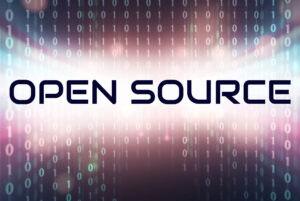Team T-Plan attended Develop:Brighton last week, one of the most inclusive events in the Gaming Industry. It was our first time there with a stand, and it was an incredible opportunity to connect with industry professionals, share insights, and learn about the latest trends in game development and testing.
And wow it certainly didn’t disappoint! We’ve bought back some great takeaways, which we plan to incorporate into our business strategy to make our product even more relevant to our Gaming customers.
We spoke to loads of industry leaders in gaming and there were three main topics that came out from the conversations. Let’s break them down in this blog.
1. Misalignment in Game Testing Terminology
One of the main topics was the misalignment in terminology when it comes to game testing. The term “QA” (Quality Assurance) was often used to describe game testing activities.
In many other industries, QA is synonymous with test automation aimed at finding miscues in workflows and increasing overall quality, such as in regression testing.
However, in the gaming world, QA often seems to encompass broader activities like play testing, which focuses on the user experience and design elements. This difference in terminology highlights the need for clearer communication and understanding between different sectors of the testing industry.
The misalignment in testing terminology often causes game houses additional work as they struggle to build in-house automation game test tools in a scalable, cost-effective manner, despite the availability of tools like T-Plan already on the market. This leads us nicely to the next point…
2. The Need for Structured Testing Approaches
A significant observation from the conference was the different approaches to testing in the gaming industry compared to other software sectors. There’s a prevalent belief that game testing is unique due to its emphasis on design and user experience. While this is true to an extent, it often leads to games being released with numerous errors because the focus shifts away from ensuring clean, working code.
Quality testing without compromise requires a structured approach in QA processes and validating the risks involved is fundamental before starting.
– Does the gaming app have the power to engage with its user?
– Are there fun features?
– Is the UI design intuitive and easy?
– Are the features easily accessible?
– Are the image files, text, graphics of good quality?
Once you’ve gathered the risks and requirements you should easily be able to identify the right testing approach for the game. By doing the groundwork early on you should be able to make a good judgement on using these testing approaches.
- Functionality Testing
- Combinational Testing
- Exploratory Testing
- Compatibility Testing
- Cleanroom Testing
- Play Testing
- Regression Testing
3. Types of Testing Suited to T-Plan’s Tool
Our discussions at Develop:Brighton emphasised the types of testing in gaming that are particularly well-suited to our tool. While traditional game testing often centers around play testing and user experience, our UI Visual testing approach is highly effective for regression, system, and user acceptance testing.
This type of testing is essential for a robust process, ensuring that the game’s core functionalities work correctly, especially after updates or changes.
We noticed more overlap between Dev and Test in the gaming industry, making it crucial to have well-defined levels of testing and best practices applied consistently throughout the development process. This includes:
- Autonomy and Accountability: There needs to be a degree of separation between QA and development teams to ensure unbiased testing and accountability.
- Alignment with Business Requirements: QA should align more with the business or game sponsor’s requirements rather than being an extension of the development team. This ensures that the testing process is thorough and meets the overall business objectives.
This overlap can be more clearly defined by T-Plan’s Game Test Automation software. Its unique design grants QA testers full ownership of the testing process without requiring intervention from developers. This autonomy ensures more validated and controlled results, empowering the QA team to deliver higher quality testing outcomes.
Conclusion
We spoke to loads of industry leaders over the 2 days at Develop:Brighton and the conversations and insights we gained reaffirmed the importance of our cost effective, scalable software solution in Game Test Automation. By continuing to develop and refine our UI Visual Testing tools, we aim to help game developers create high-quality, error-free games that provide exceptional user experiences.
Our ‘out of the box’ tool that works on any system or platform—designed to help QA testers define their testing strategies and deploy a reliable and consistent approach every time. Proven to improve end user game play and speed up time to market.
If you missed us at Develop:Brighton or want to learn more about how T-Plan can help with your game testing needs, feel free to contact us for a FREE demo—our award-winning team are ready to help!
We’re always here to help you automate and improve your game testing processes.



